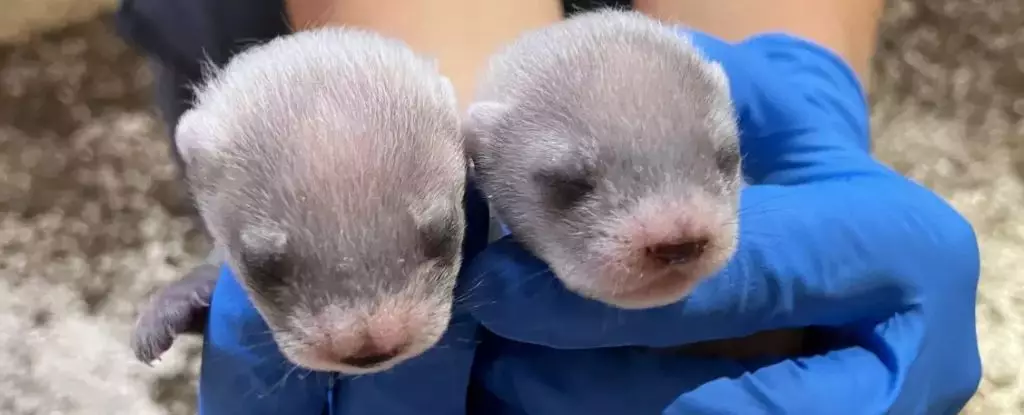The story of the black-footed ferret is one that embodies both despair and hope. Declared extinct in 1979, this small, charismatic creature faced re-emergence through cloning technology over four decades later. At the forefront of this resurgence is a remarkable black-footed ferret named Antonia, a living testament to the advancements in genetic science. Cloned from a specimen named Willa, who passed away in 1988, Antonia has become a mother to two healthy cubs, stirring excitement in conservation circles. Yet, the exciting prospect of having cloned ferrets raises critical questions about species conservation and the ethics of relying on technology to rejuvenate struggling populations.
The cloning process that brought Antonia into existence was not merely a scientific curiosity; it represents the culmination of years of meticulous research in conservation genetics. The foundational program began in 1981, capturing 18 ferrets from a dwindling population in Wyoming. From this small gene pool, scientists initiated a captive breeding initiative, which has since seen the wild population grow to approximately 350 individuals today. While this figure might suggest a success story, the underlying issue of low genetic diversity remains an ongoing concern. Cloning Antonia from a tissue sample that displayed higher genetic variation could potentially introduce beneficial genes into the wild population, a move heralded as essential for the species’ long-term recovery.
The U.S. Fish and Wildlife Service and various conservation organizations collaborated to achieve this milestone, demonstrating a fusion of scientific expertise and passion for wildlife conservation. Their efforts highlight an innovative approach to wildlife recovery in the face of genetic bottlenecks, suggesting cloning could become a tool in the broader conservation toolkit.
The Controversy Around Cloning
Despite the promise of technological interventions like cloning, skepticism pervades academic circles regarding the effectiveness of these methods in reversing the decline of endangered species. Critics argue that the wealth of resources devoted to cloning an endangered species could be far more beneficial if redirected toward habitat preservation and restoration. The human influence on ecosystems—primarily through habitat degradation and fragmentation—poses significant challenges, which even cloning cannot mitigate. Wildlife ecologist David Jachowski notably cautioned against the potential pitfalls of over-reliance on genetic techniques without addressing the environmental factors leading to a species’ decline.
The dilemma lies in balancing the hope derived from scientific breakthroughs with a pragmatic understanding that technological solutions are not silver bullets. If the habitats necessary for the survival of species like the black-footed ferret continue to diminish due to agriculture and urbanization, then resurrecting individuals through cloning alone may serve as a temporary fix with little long-lasting impact.
The case of Antonia and her offspring implores conservationists to consider a comprehensive strategy beyond cloning. While the concept of genetic restoration is alluring, the broader implications of habitat loss and human-wildlife interactions must remain at the forefront of conservation efforts. Effective strategies need to entail habitat restoration initiatives, community engagement, and policies designed to mitigate human-wildlife conflicts.
As the black-footed ferret navigates its complex landscape in the wild, there is an essential need for cooperation among ecological scientists, policymakers, and the general public. Sustainable management strategies that prioritize environmental integrity can provide a more holistic solution. By integrating traditional conservation practices with innovations such as cloning, we can enhance the resilience of species and their ecosystems.
Antonia’s success story is indeed a remarkable chapter in wildlife conservation, illustrating the potential of modern science to aid endangered species. However, the future of the black-footed ferret—and indeed many similar species—cannot solely rest on the shoulders of cloning. A restoration-centric approach that addresses the fundamental threats posed by habitat destruction and human-induced changes is essential for fostering a thriving wildlife population.
Ultimately, while we celebrate scientific achievements like the birth of Antonia’s pups, it is critical to approach conservation holistically. Balancing visionary genetic advancements with grassroots ecological restoration can help ensure that the legacy of the black-footed ferret will not just be one of survival but of thriving populations living within sustainable ecosystems.


Leave a Reply